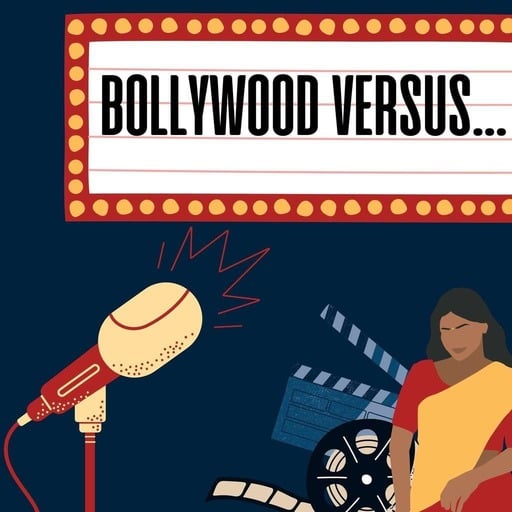Dans cet épisode #136, nous allons parler de Slumdog Millionaire, sorti en 2008, et qui a remporté 8 Oscars, 4 Golden Globes et les applaudissements du monde entier.
Pourtant, ce film ne serait-il pas stigmatisant ? Respecte-t-il seulement le roman Q&A de Vikas Swarup ? Qu'en est-il des controverses et des vives critiques indiennes ?
On décrypte tout en compagnie de Victoire, podcastrice chez "Adapte-moi si tu peux".
Suivez-nous sur insta : bollywood_versus et twitter : BV_podcast
Sources :
[1]C. Clini et D. Valančiūnas, « Bollywood and slum tours: poverty tourism and the Indian cultural industry », Cultural Trends, vol. 32, no 4, p. 366 382, août 2023, doi: 10.1080/09548963.2023.2212618.
[2]I. Krstić, « Bombay Cinema », in Slums on Screen, in World Cinema and the Planet of Slums. , Edinburgh University Press, 2016, p. 225 256. Consulté le: 11 octobre 2023. [En ligne]. Disponible sur: https://www.jstor.org/stable/10.3366/j.ctt1bh2kdk.14
[3]N. Vanfasse, « Charles Dickens in Twenty-First-Century India. A Study of the Novel Q & A by Vikas Swarup and its Film Adaptation by Danny Boyle »:, Études anglaises, vol. Vol. 65, no 1, p. 7 18, avr. 2012, doi: 10.3917/etan.651.0007.
[4]S. Abramovitch, « Danny Boyle Looks Back on the Kids and Controversy of ‘Slumdog Millionaire’ (Q&A) », The Hollywood Reporter. Consulté le: 16 octobre 2023. [En ligne]. Disponible sur: https://www.hollywoodreporter.com/movies/movie-news/danny-boyle-looks-back-kids-683909/
[5]« India Through The Western Lens », Forbes India. Consulté le: 17 octobre 2023. [En ligne]. Disponible sur: https://www.forbesindia.com/article/think/india-through-the-western-lens/43481/1
[6]F. Landy, « Mon petit bidonville à Bombay », echogeo, mars 2009, doi: 10.4000/echogeo.10947.
[7]M. Davis, Planet of slums. London ; New York: Verso, 2006.
[8]D. Valanciunas, « Questioning “Slumdog Millionaire”: Ambivalent Practices and Imaginary Truths », janv. 2017, Consulté le: 13 octobre 2023. [En ligne]. Disponible sur: https://www.academia.edu/38775710/Questioning_Slumdog_Millionaire_Ambivalent_Practices_and_Imaginary_Truths
[9]J. G. Shaheen, « Reel Bad Arabs: How Hollywood Vilifies a People », The Annals of the American Academy of Political and Social Science, vol. 588, p. 171 193, 2003.
[10]S. Roy, « Slumdog Millionaire: Capitalism, a Love Story », The Journal of Popular Culture, vol. 49, no 1, p. 155 173, 2016, doi: 10.1111/jpcu.12390.
[11]« Slumdog Paradox | YaleGlobal Online ». Consulté le: 13 octobre 2023. [En ligne]. Disponible sur: https://archive-yaleglobal.yale.edu/content/slumdog-paradox
[12]« “Slumdog” Director Danny Boyle On Filming In India », NPR. Consulté le: 16 octobre 2023. [En ligne]. Disponible sur: https://www.npr.org/2009/02/13/100671912/slumdog-director-danny-boyle-on-filming-in-india
[13]The “Slumdog" Phenomenon: A Critical Anthology. Anthem Press, 2013. Consulté le: 11 janvier 2024. [En ligne]. Disponible sur: https://www.jstor.org/stable/j.ctt1gxpc01
[14]E. Gonzaga, « The Cinematographic Unconscious of Slum Voyeurism », Cinema Journal, vol. 56, no 4, p. 102, 2017.
[15]B. Marx, T. Stoker, et T. Suri, « The Economics of Slums in the Developing World », Journal of Economic Perspectives, vol. 27, no 4, p. 187 210, nov. 2013, doi: 10.1257/jep.27.4.187.
[16]I. Krstić, « The Origins of Slums, Capitalism and the Shortcomings of Cinema », Mediapolis: Journal of Cities and Culture, Vol. 4, No. 3, janv. 2019, Consulté le: 13 octobre 2023. [En ligne]. Disponible sur: https://www.academia.edu/40653131/The_Origins_of_Slums_Capitalism_and_the_Shortcomings_of_Cinema
[17]F. Hanrahan, « The Poverty Tour: Life in the Slums of Mumbai and Manila as seen in Danny Boyle’s Slumdog Millionaire and Merlinda Bobis’s The Solemn Lantern Maker », ATLANTIS Journal of the Spanish Association of Anglo-American Studies - 37.1 (June 2015), janv. 2015, Consulté le: 13 octobre 2023. [En ligne]. Disponible sur: https://www.academia.edu/38317624/The_Poverty_Tour_Life_in_the_Slums_of_Mumbai_and_Manila_as_seen_in_Danny_Boyle_s_Slumdog_Millionaire_and_Merlinda_Bobis_s_The_Solemn_Lantern_Maker
[18]A. Gehlawat, The Slumdog Phenomenon: A Critical Anthology. Anthem Press, 2013.
[19]J. J. Cavallero, « Transnational Adaptation: Q & A, Slumdog Millionaire , and Aesthetic and Economic Relationships Between Bollywood and Hollywood », The J of Popular Culture, vol. 50, no 4, p. 835 854, août 2017, doi: 10.1111/jpcu.12564.


 Emissions
Emissions











